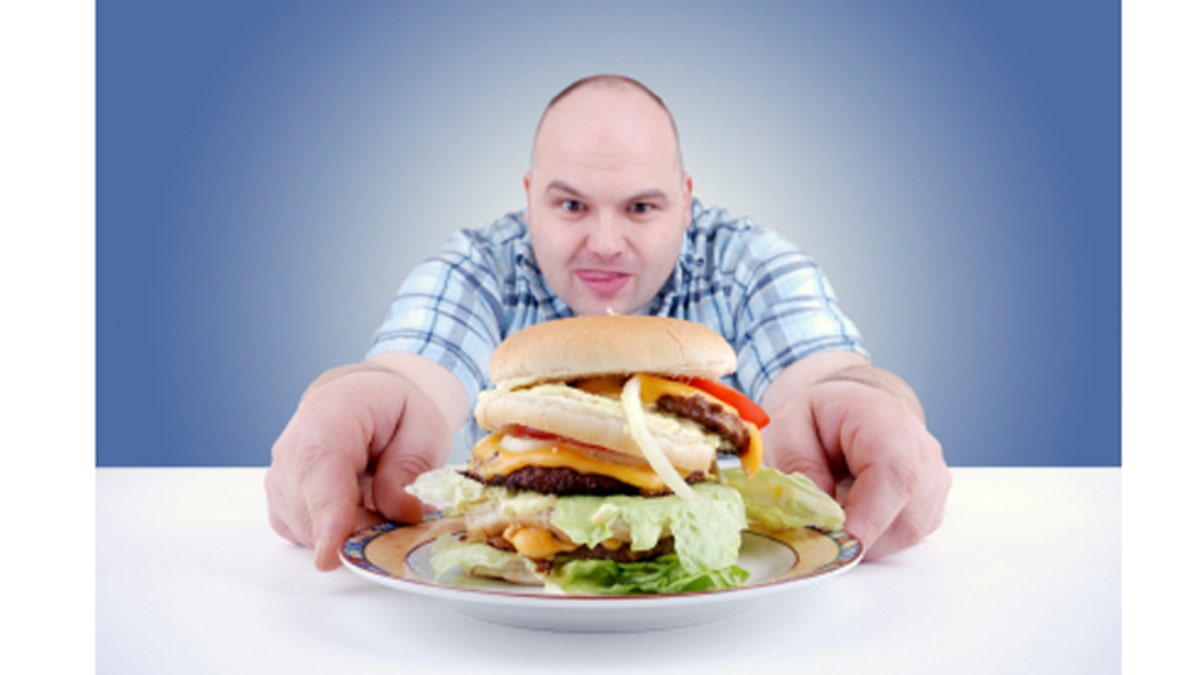
(iStock)
When it comes to food, humans aren’t great with self-control — as evidenced by the fact that more than one in 10 of the world’s adult population is obese (of course, self-control isn't the only cause of obesity). But if you're trying to watch your diet and cut down portion sizes, made difficult by enormous sizes at restaurants these days, these 10 tips might just help you cut down your meals, just in case you can’t muster up the self-control to resist another bite. Try tricking your brain into eating less with these 10 tips (no hypnosis necessary). In fact, it might be as easy as changing the color of your tablecloths, or replacing a couple of plates in your kitchen.
Use small plates and bowls
A study published in January 2012 in the Journal of Consumer Research discovered that people tend to serve themselves considerably less in small bowls than large bowls. Researchers theorized this was because of the Delboeuf illusion in which two circles of the same size are placed close to each other. One is surrounded by a large ring (think a large plate), and the other is surrounded by a smaller ring (think a small plate). This illusion makes the circle (i.e., our food) surrounded by the large ring appear smaller, so we end up serving ourselves too much.
A 2006 study also found that even nutritional experts dished themselves (and ate) more ice cream when given larger dinnerware. Oddly enough, when this experiment was altered so that people were eating in isolation, the dish size had no effect.
Make sure your plate or bowl is a different color than your food
The 2012 Journal of Consumer Research study previously mentioned also found that the color of your dishware matters. The bigger the difference between the food color and the plate color, the less likely participants were to overserve themselves. In other words, you’re better off serving tomato soup in a white bowl, since you’re more likely to serve yourself too much if you serve it in a red bowl.
Match your tablecloth to your dishware
The Consumer Research study reported a third factor influencing our portion control: tablecloth color. When the tablecloth color matched the dishware color, participants dished themselves less food. Researchers hypothesized that this was because matching the tablecloth and the dishware helps eliminate the Delboeuf illusion’s effect (see trick number 1) by making the dishware (i.e., the outer circle of the Delboeuf illusion) less noticeable.
For snack attacks, choose 100-calorie packs
It turns out those individually packaged 100-calorie packs actually do the trick. A 2011 study published in Obesity found that participants ate 25.2 percent fewer calories when eating from 100-calorie snack packs than from larger bags of snacks. This strategy was particularly effective with overweight participants, who actually ate 54.1 percent less when given the 100-calorie packs.
Don’t eat in front of the computer or TV
The more distracted we are, the more we eat, according to a 2007 study published in the American Journal of Clinical Nutrition. Researchers reported that participants who ate while playing solitaire felt less full after eating than participants who ate without any distractions. The solitaire participants also ate twice as many snacks as the non-distracted patients and had a harder time remembering what they ate. Conclusion: Get away from your desk and take that lunch break somewhere else — you deserve the break anyway.
See all 10 mind tricks to fool yourself into eating less here
More from The Daily Meal
No Ordinary McRib
Reinventing Campbell's Soups
Essential Baking Tools
Best Recipes Using Cookies




















